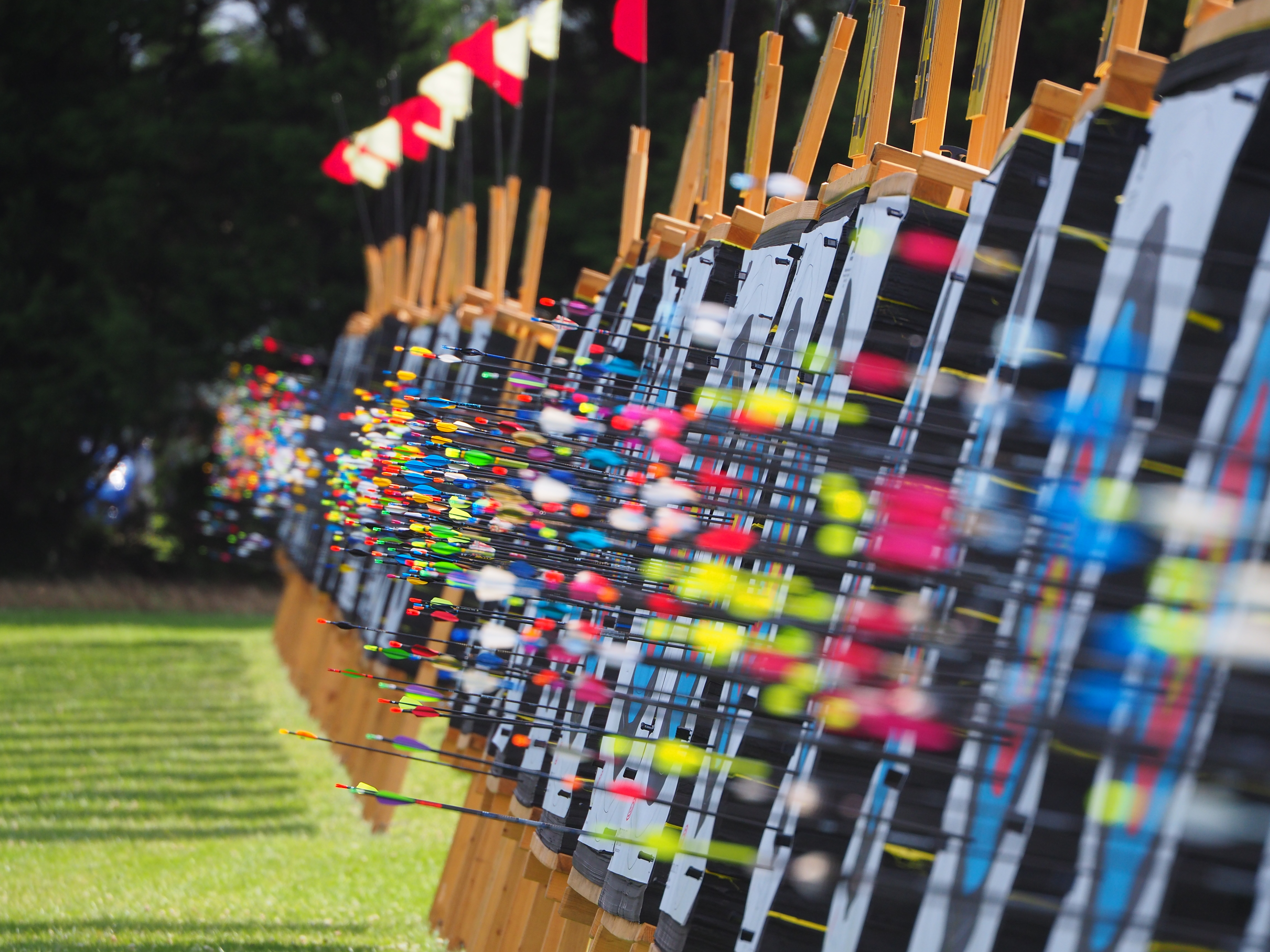Seeing a score improve is an excellent motivator for some archers, and if you want to enter a competition (either now or in the future), having an understanding of how to score is really useful.

A key archery feature, that differs from many sports, is that archers score themselves. This means that, even if you're 7, 17 or 70, a novice or an Olympic archer, everyone on the target has an equal part to play.
Depending on the round you’re shooting, you’ll be scoring using one of two methods: Imperial 5-zone (9, 7, 5, 3 1, based on coloured bands) and Metric 10-zone (10 to 1, based on scoring rings).

Left, scoring imperial, Right, scoring metric
In some competitions, like those run by World Archery, you’ll be asked to score Xs too. This is the inner circle in the gold 10 ring.
Any arrow touching the line between scores will be scored at the higher value; if you're in any doubt it's good sense to score your arrows up as it's likely your target companions will agree.
For general shooting down the club, there are many apps you can use that will calculate your score. However, if you’re shooting at a competition, you’ll probably be scoring on paper.
One person on your target should elect to write down the scores, but everyone must call their own scores. Any archer can be the scorer (and if the event has double scoring, another archer will enter scores on the PDA). The other archers should act as score checkers and arrow pullers.
If you’re not sure how to score, you can ask another archer to do it for you, as it makes sense to give this role to the most experienced archer present. The only thing to remember is that, if you’re just using one form of scoring, the scorer mustn't score their own arrows, so they should pass the sheet to someone else.
You should call your arrows out in groups of threes, starting with the highest three arrows. Indicate which arrows you are calling by pointing to them, but don’t touch them. The scorer will then repeat the three values as they are written down using blue or black ink.
One of the hardest things about scoring at a competition is having the confidence to question arrow calls. Be assured that judges do not mind if you call them over (some say that it stops them from getting bored during the day!) and the other archers on your target won’t mind either.
If an arrow value is written down wrong, the scorer shouldn’t change it themselves. Instead, they’ll need to call a judge, who will amend the scoresheet. Only changes made by them in red ink will be accepted and in all other cases the archer will be awarded the lower arrow value or, in the case of illegibility, a zero value. Scorers can change the end totals (the maths), so don't worry about the need to make corrections. Try and do the maths as you go along rather than waiting to the end which - for juniors it's helpful if a parent oversees this.
At the end of the round, the scorer should add up the scores, hits and golds, then make sure both they and the archer sign the sheet before handing it in to the tournament team.
Target scoring is really simple so don't be afraid to ask for help from your target companions and judges. Remember every archer had to start somewhere and they're always happy to help!